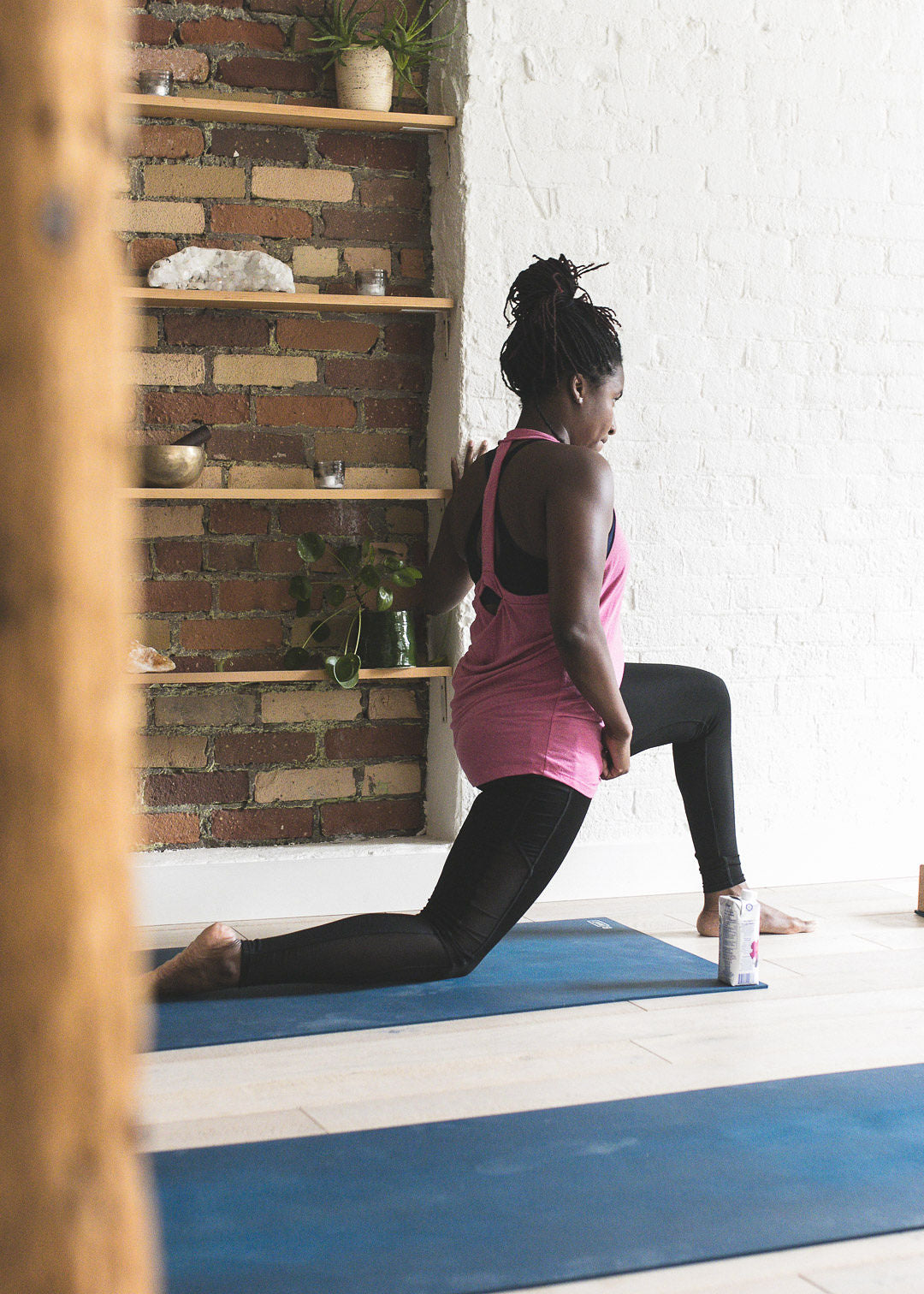
· By Megan Alexander
Low vs. high-impact movement: what is what and which is right for you?
With so many great ways to move your body and stay active, it’s easy to feel some decision paralysis when it comes to choosing what’s right for you. As with anything, making informed choices starts with fully understanding your options. Read on for a breakdown of two major categories of movement: low and high impact; their qualifiers, benefits and why we dig them.
HIGH-IMPACT MOVEMENT
What is it?
High-impact exercise is classified by movements that increase your heart rate while simultaneously putting a lot of impact on your joints. Typically, high-impact movements involve lifting both feet off the ground simultaneously. Think: HIIT, running, plyometrics (jumping), or cross-training. The “impact” in high-impact movement refers to the way your body comes into contact with the ground or training equipment. This action tends to put a high degree of stress on the joints and bones (spoiler alert: this might not be a bad thing.)
What are its benefits?
As high-impact exercises increase your breathing and heart rate, over time we are able to train our bodies to perform these exercises - as well as more regular tasks like carrying groceries or chasing the bus - without getting winded. The primary benefit of high-impact movement is better cardiovascular health, which enjoys the sweet side effects of a lowered chance of developing heart disease, improved sleep, an efficient way to burn calories and stress management.
Remember when we mentioned the stress on your joints and bones from the high-impact in these kinds of exercises? While typically stress can = bad, studies indicate that the stress from high-impact exercises actually help to strengthen our bones by increasing their mass and density, countering the natural bone loss we experience as we get older. Talk about preventative medicine.
LOW-IMPACT MOVEMENT
What is it?
Given what we know about high-impact exercise, low-impact exercise is exactly as its name suggests. Defined by movements that put minimal strain on the joints and tend to be gentler on the body, they’re often made up of fluid motions with a focus on both strength and flexibility. Think: yoga, Pilates, dancing, swimming, and cycling. Low-impact exercises are great for everyone but especially great for those new to working out or who are experiencing a limited range of movement, a recovering injury or illness.
What are its benefits?
Low-impact exercises are great if you’re looking to put less stress on your joints, and for this reason, they tend to be safer and lead to less injury. Movement practices like yoga and Pilates often emphasize core stability, which, over time, assists with improving balance and posture. For those recovering from injuries, they act as a gentle way to build up strength and mobility slowly and are often used in conjunction with higher-impact movement to create balance and longevity in a complete movement practice.
WHICH IS RIGHT FOR YOU?
So with a better understanding of what each type of movement entails, which kind is right for you? The truth is: there is no one-size-fits-all answer. The decision of which type of movement to incorporate into your daily life is entirely dependent on what your body needs, what benefits you’re looking to derive and your physical capabilities.
While high-impact exercises are great for heart health and bone strength, low-impact movement practices help to build strength and stamina over time.
High-impact exercises are incredibly effective at stimulating our happy hormones like dopamine and serotonin, which is why you usually feel happier after a workout. Meanwhile, low-impact movements, especially when paired with meditative elements, are excellent at reducing cortisol (the stress hormone). Think about how you feel after your favourite yoga class or when you take a walk in nature.
Ultimately, you get to tailor your movement practices to suit your needs and desires. There are no absolutes when it comes to which type of movement might be right for you. Your personal practice should be designed to nurture both your mental and physical needs and honour the different cycles you go through. You might find yourself in periods where you need a boost and high-impact movements can assist with this. Alternatively, you might be craving something milder, less strenuous, and more meditative - this is a time when low-impact movement practices can support you. The key is to always listen to your body and with the right information, you can make decisions that are both intellectually sound and intuitive.
While Good Space primarily focuses on low-impact movement classes like yoga and Pilates, we do offer MOVE [groove] classes twice weekly, which scratch the high-impact itch. Take a look at our schedule to find a class that suits you and join us for one soon!
